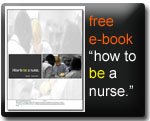 Close to half of all American adults have trouble understanding and using basic health information [states a recent report from the Institute of Medicine]. Most consumer health information and patient education materials are written at the 10th grade level or higher, while the majority of the population read at an 8th grade level or lower, and that is without the medical jargon!
Close to half of all American adults have trouble understanding and using basic health information [states a recent report from the Institute of Medicine]. Most consumer health information and patient education materials are written at the 10th grade level or higher, while the majority of the population read at an 8th grade level or lower, and that is without the medical jargon! So why worry?
~ "Literacy is the strongest predictor of health status – more than age, income, employment status, race or ethnicity, and educational level!
~ Emergency room patients with inadequate literacy skills are 2X's more likely to be hospitalized.
~ Patients with poor literacy skills are 5X's more likely to misinterpret their prescriptions.
~ People with low literacy skills have 4X's greater annual health costs.
~ The FDA, JCAHO, and NCQA require health care institutions to document evidence that patients have understood the medical information provided to them."
But what can you do about it? How can you identify patients with low literacy?
How can you improve communication with your patients?
Click on the title or here for excellent resources from the Medical Library Association to help you understand and address this issue.









No comments:
Post a Comment